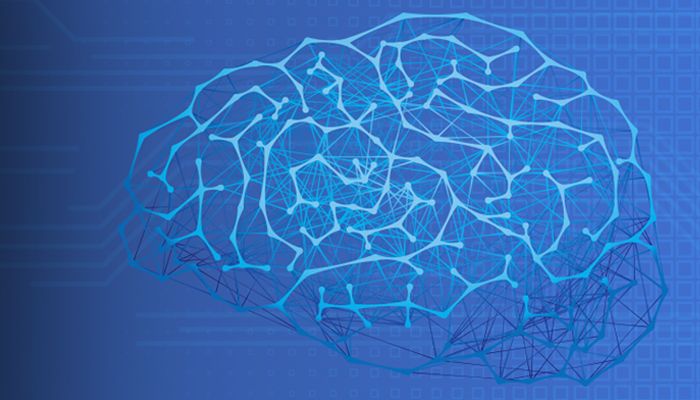The explosive growth of artificial intelligence, predictive analytics and big data tools have had a revolutionary impact on the way businesses consider, evaluate and execute their strategy. In fact, PwC estimates AI will have a $15.7 trillion dollar impact on the global economy by 2030, and this trend is only likely to accelerate as these technologies proliferate.1
So how does cognitive technology apply to the service desk? Before answering that question, let’s start by reviewing the role of the modern service desk. We call the service desk when we have an issue. The service desk is then responsible for helping you with the issue. Notice, I did not use the word “resolve” because this is not their primary goal. Not all issues are related to things that are broken. Many are end-user questions, clarifications, requests, training, and other areas of user concern. So, whether the user has an issue, problem, question or comment, the service desk’s functional response is always the same:
- What are you asking for?
- Can you describe it? and,
- How do I answer it?
This information is captured as an incident record, and the process of resolving issues is commonly known as Incident Management.
Incidents are costly, and in some cases, very costly if it involves the disruption of a critical business service related to operating the company. These costs include fixing, managing, reporting, and staffing for incidents all due to the necessity for human involvement. The ultimate goal of service management is to eliminate incidents altogether and thus eradicate those costs.
However, this is not a pragmatic nor realistic goal because incidents will always occur. The focus for this Part 1 of a two blog series is to introduce how the industry is using cognitive technologies to help transition costly human-based responses to lower cost, “robot-driven” interactions. Cognitive technology has the potential to not only reduce the overall cost burden of incident management, but also significantly improve the end user experience. The question must be asked though, what impact will this have on your current service desk and how do you prepare for this evolution? I will cover that in “Part 2” of the series by further exploring the challenges and considerations for the move.
Introduction to Chat-Bots
We’ve all been to web sites where an online instant-messaging or chat session is presented to customers as a method to interact with customer service or sales. Some institutions will argue they are already driving robotic end-user communication using these “Chat” tools. Although these are effective solutions and arguably improves customer service, this is quickly becoming an outdated method of end-user support. Why? The reason is that chat interaction is merely shifting the conversation from a phone to a keyboard and still requires a human analyst on the other end. Furthermore, you are at the mercy of the analyst’s level of knowledge and experience. If the analyst has handled the issue before and has an answer, the session is considered satisfactory. However, if the analyst responding lacks the relevant experience, then the interaction is a failure. But, could this “failure” have been prevented if the collective knowledge and experience of the service desk team existed in a repository? Today, with the introduction of cognitive technology, this answer is quickly becoming a resounding “yes.” So, let’s discuss why that’s becoming true.
To make the transition from “chat” to “chat-bot” means shifting to cognitive technology that leverages machine learning. To create a “chat-bot” relies on quality data that is collected, correlated, organized and eventually presented in what I refer to as the “Statement-Response” dynamic. The chat-bot response to the user is either directive or predictive—meaning the robot either has a direct and concise answer, or it will predict what you want and drive to a conclusion. They allow a user to describe the situation using natural language, and robotic responses based on the natural language are correlated and returned. Many chat-bot sessions are keyboard based; however, the more modern method uses voice driven technology like Siri or Alexa. Speaking or typing using natural language is a compelling proposition, but its success is based on the overall quality and efficiency of the backend processing. And, when it isn’t done well, we are all familiar with the memes and parodies about Auto-Correct, Siri or Alexa.
The concept of collecting data for directing or predicting a desired result is not new. We see this everyday while surfing the internet. Online retailers use data to push specific advertisements to your browser that correlate with your web browsing history and predict what you want. Personality data is used by online dating sites where it is parsed and matched to thousands of other submissions using a proprietary psychological algorithm resulting in higher quality matches. Intelligence and protective agencies around the world use correlated data to not only help solve current crimes, but crime potentiality by collecting what may seem like innocuous data but when correlated, patterns and trends can be identified leading to the possibility of wrongdoing. Think back to the IBM television commercial where some aircraft workers gather in front of an airplane and they ask IBM’s cognitive solution, “Watson”, what the avionics are telling it. Watson responds: “Based on maintenance and performance records, you should replace the C4 capacitor”. This exchange is the very definition of how cognitive technology works. This analysis only works when the history records of not just one plane, but tens of thousands of airplanes are analyzed. That’s a feat which exceeds human capacity but illustrates how cognitive technology can harness the experience of many to provide answers to one specific call to action – “time for maintenance.”
The Cognitive Service Desk Defined
The typical service desk organization is configured with three levels. The first level (L1) is the first line of communication, taking calls or processing requests from end users and creating the necessary incident records. The L1 analyst may or may not possess the skills needed to respond to the user. If they do not, they assign the incident to the next skill level. The second level (L2) are the subject matter experts who receive those assigned incidents and have the responsibility for reaching a conclusion. Often, L2 incidents are more complicated in nature and are often related to most infrastructure issues, common-off-the-shelf solutions or some business applications. The third level (L3) is the most technically advanced staff and as the most highly skilled are also the costliest. Many of them are referred to as the engineers or application developers that are aligned to the most critical technologies in the business. These people are the last hope for resolution and their involvement interrupts their ability to develop future innovations which has the potential to stifle progress.
With the advent of cognitive technology, corporations now have the potential to collect data and use it to build a database of logical conclusions. This technology can span all areas of the business, to include marketing, manufacturing, engineering, sales, human resources and IT. Now think about the millions of incidents, problems, knowledge, change, and asset records processed by the service desk annually. These records contain a vast amount of issues, questions and information, all which pertain to a situation leading to an outcome. Cognitive IT solutions can now scan those records and correlate this information to build that database of “Statement-Response” phrases, providing the linguistic context to the end-user. The initial targets for cognitive technology are the high-volume and common requests that flood the service desk every day. These requests are items like, password resets, account creation, office application errors, network connectivity, business application errors, job scheduling abends, and many of the like. Therefore, combining cognitive technology with chat-bot capability is compelling, exciting and brings about all kinds of possibilities. Not only can it remove all bounds of geography, language, culture, and technology but it also easily spans time zones. Service desk support anytime, anyplace, and anywhere is now possible.
The Future of the Service Desk
So how do I prepare for this? To begin, cognitive tools must be taught how to correlate data. The tool will not inherently know how a service desk analyst works and thinks; therefore, it must learn to do this, and that learning comes from a human. Use cases like the handling of common internal issues, office productivity questions, web site error messages and account concerns are good places to begin building the service desk knowledge base. In most organizations, these types of issues represent the majority of service desk calls. These and many other common end-user requests are perfect candidates for the “Statement-Response” database. Engaging both your L1 and L2 staff to be the teachers of the cognitive solution is necessary. Aligning people’s experiences with the strength of cognitive data mining can result in a breakthrough on how service management organizations use big data to come to conclusions, faster, better, and cheaper.
This brings me back to my prior statement that incidents are costly. Using cognitive technology (in this article “robots”) to drive down the cost of an incident is certainly the aspiration of every organization I have ever worked with. Combining cost reduction while improving the user experience accelerates the need to rapidly evolve your service desk as a necessity for the future.
You may ask the question “Wouldn’t teaching these robots essentially drive service desk analysts out of job?” This, to me, is the most compelling part of the technology because of the positive impact it will have on IT resources. The L1 analyst may someday be offset by cognitive technology which can interface faster, better, and cheaper but only for the repetitive and low-value add activities. The L1 analyst role would then grow and evolve to become the subject matter expert on core business-oriented issues where higher value is achieved. They will have career paths permitting them to grow into training and education roles helping the organization improve, as well as become a source of new ideas. They will become an integral part of business operations and not the overhead they are viewed to be today. They will personally handle HR requests, handle supply-chain application issues and remove roadblocks to the movement of products and revenue streams. They will be recognized as high-value and business necessary staff. They will become the new service desk.
I’m sure by now the importance of cognitive technology makes more sense for why many companies are seeking it. While there are multiple technologies that offer this revolution (e.g., BMC Helix Remedy), it’s more than just plugging in a new software to achieve the vision and success I’ve described above. People and process as well as the data and technology need to be effectively configured so that the revolution happens for the benefit of both the organization and IT professionals. So, look for my next blog, where I will get into the details of the full-picture of getting to a cognitive service desk future state. If your company needs help in navigating this evolution, please fill out our form to speak to one of our experts to help you get started.
1 Rao, Dr. Anand S., and Gerard Verweij. “PwC’s Global Artificial Intelligence Study: Sizing the Prize.” PwC, 2017, www.pwc.com/gx/en/issues/data-and-analytics/publications/artificial-intelligence-study.html.↩
These postings are my own and do not necessarily represent BMC's position, strategies, or opinion.
See an error or have a suggestion? Please let us know by emailing blogs@bmc.com.






